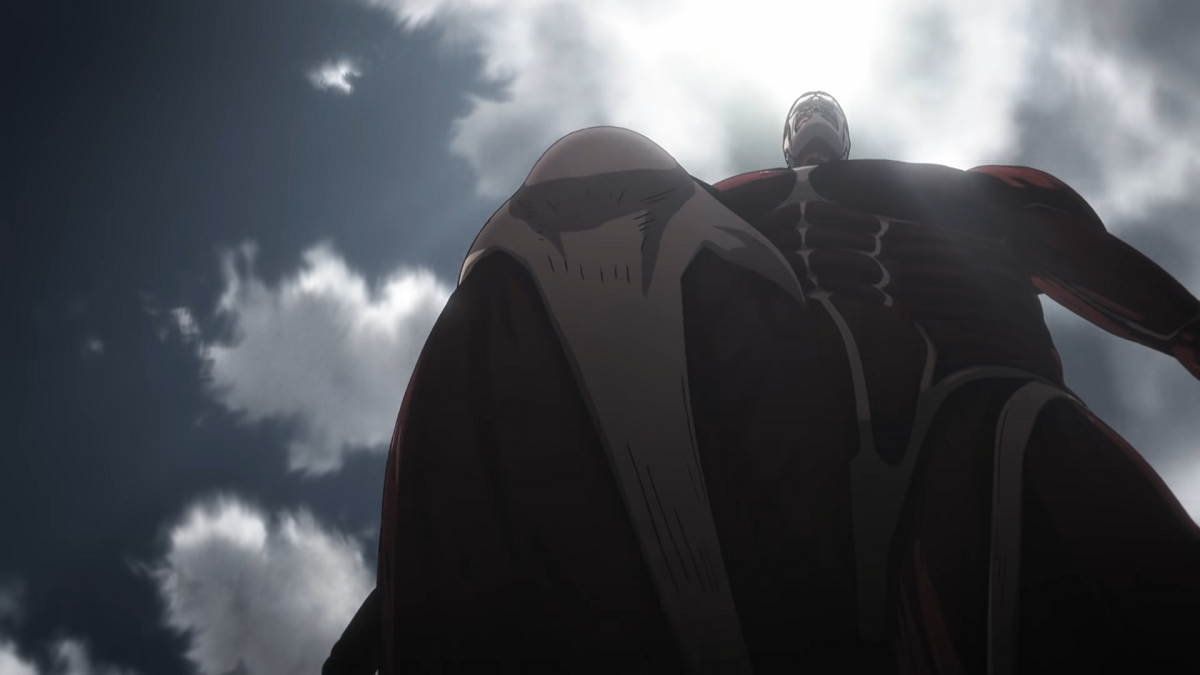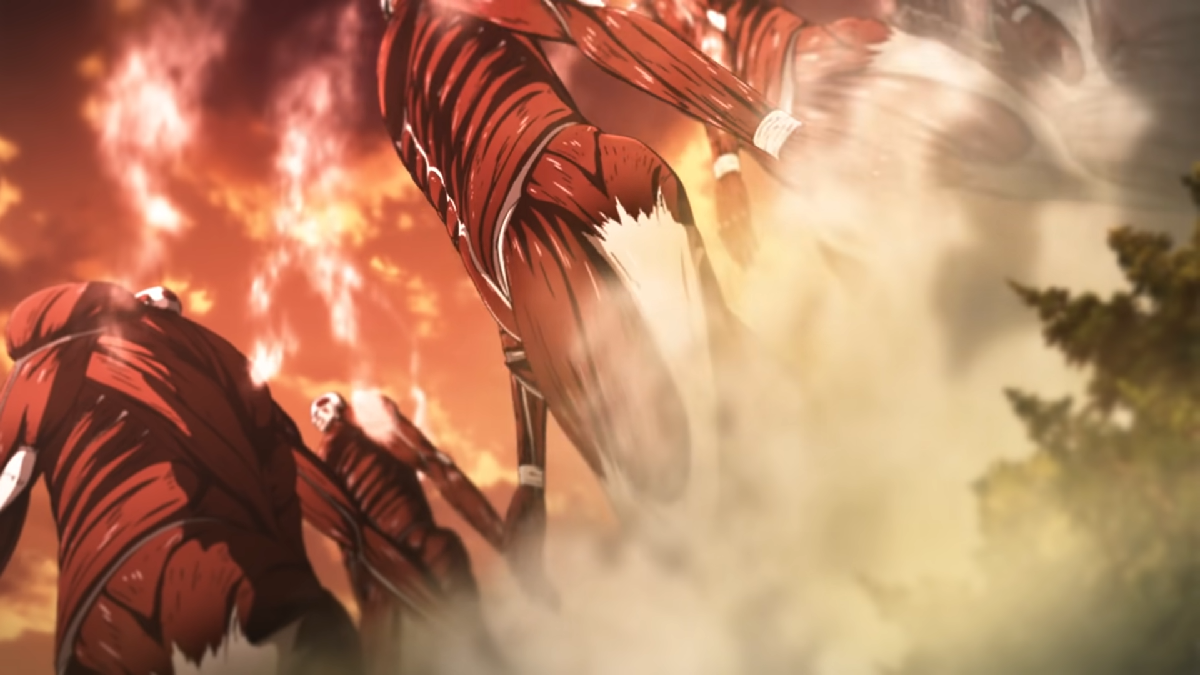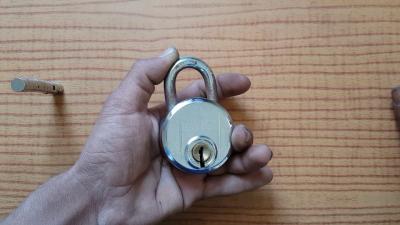The Rumbling in Attack on Titan isn’t just a plot twist; it’s a culmination of complex themes, character motivations, and the world’s history. If you’re a fan, you know it represents the ultimate act of desperation and power. But what really drives this cataclysmic event? Let’s dive into the heart of the Rumbling and explore its significance. We’ll unpack the mysteries surrounding it, the emotional stakes at play, and why it’s more than just a spectacle.
Historical Context of the Titans

To understand the Rumbling, we first need to rewind and explore the rich historical tapestry of the Titans. The Titans aren’t just mindless giants; they embody centuries of conflict, pain, and survival. Here are some key points to consider:
- The Origin of Titans: Titans originated from Eldians, who were cursed by Ymir Fritz. This curse transformed them into Titans, linking their fate to the very land they inhabit.
- The Marleyan Oppression: For generations, Eldians faced systemic oppression from Marleyans. This inequality sowed the seeds of resentment and desperation, motivating many to harness Titan powers.
- The Founding Titan: Central to the Titan lore is the Founding Titan, held by Eren Yeager. This Titan possesses the power to control other Titans and manipulate memories, making it a pivotal element in the struggle for freedom.
Throughout history, the Titans have played various roles—from weapons of war to symbols of fear. For instance, the Great Titan War was a turning point, shaping international relations and the balance of power. The Eldians were cast as villains, but what’s often overlooked are their struggles and the trauma they endured.
The enmity between Marleyans and Eldians also fuels the narrative. It’s not just a battle of strength but a clash of ideologies and a fight for survival. As we see in the series, the cycle of hatred and revenge perpetuates conflict, leading to the colossal decision that Eren ultimately makes.
Understanding this historical context is crucial to grasping the emotional weight behind the Rumbling. It’s a desperate act born from a legacy of pain, oppression, and the desire to break free from an unending cycle. The Rumbling isn’t merely about the destruction it causes; it’s a manifestation of the characters’ struggles, fears, and hopes in a world filled with Titans.
In the next sections, we’ll delve deeper into the motivations of key characters involved in the Rumbling and how their pasts shape their choices. So, buckle up as we journey through the intricate layers of Attack on Titan!
Also Read This: How to Watch Rumble on Roku
3. The Role of Marley and Eldians

The world of Attack on Titan is a fascinating tapestry of political intrigue, historical grudges, and the quest for freedom. At the heart of the conflict lies the relationship between the Marleyans and the Eldians. Understanding this dynamic is crucial to grasping the motivations behind the Rumbling.
Marley, a powerful nation, has long exploited the Eldians, relegating them to a status of oppression. These individuals, who can transform into Titans, are seen as weapons by Marley, used to instill fear in their enemies. The Eldians are segregated, often depicted as the villains in this convoluted narrative, further complicating their quest for autonomy.
After years of suffering, the Eldians begin to rise against their oppressors. This struggle is personified in the character of Eren Yeager, who embodies the pain and rage of his people. Eren’s decision to initiate the Rumbling is, in many ways, a direct response to the systemic injustice faced by the Eldians under Marleyan rule.
- Oppression: Eldians face discrimination, facing hostility and violence simply for their lineage.
- Rebellion: The rise of Eldian warriors like Eren symbolizes a fight for dignity and autonomy.
- Marley's Manipulation: Marley uses Eldians as tools of war while denying their humanity.
As the story unfolds, the actions of both Marley and the Eldians become catalysts for the Rumbling. Eren’s plan is not merely about revenge; it’s about breaking free from the cycle of hate and violence that has perpetuated for generations. The Rumbling, therefore, becomes a form of collective catharsis, albeit one with catastrophic implications.
Also Read This: How to Play Link Wray Rumble on Guitar and Learn the Classic Riffs
4. Key Characters Involved in the Rumbling
In the epic saga of Attack on Titan, the Rumbling isn’t just a plot device; it’s intertwined with the fates of several key characters. Each brings their unique perspective and motivations, making the event all the more complex and tragic.
Eren Yeager is undoubtedly the central figure in this catastrophic event. Once a symbol of hope and freedom, Eren’s transformation into a ruthless leader willing to sacrifice millions for his vision of Eldian liberation raises profound moral questions. His resolve to unleash the Rumbling stems from a deep-seated belief that only through absolute destruction can his people truly be free.
| Character | Role in the Rumbling |
|---|---|
| Eren Yeager | The architect of the Rumbling, leading the Titans to obliterate humanity. |
| Armin Arlert | Initially supports Eren but grapples with the morality of the plan. |
| Mikasa Ackerman | Eren's childhood friend, torn between love for Eren and the horror of his actions. |
| Reiner Braun | Struggles with guilt and his role in the larger conflict, representing the Marleyan perspective. |
Each character’s journey plays a pivotal role in shaping the narrative around the Rumbling. Armin, for instance, reflects the internal struggle between loyalty to friends and the moral implications of their actions. Meanwhile, Mikasa embodies the personal stakes involved in Eren's decisions, further complicating the emotional landscape of the story.
As we delve deeper into these characters' motivations and the consequences of their choices, it becomes clear that the Rumbling is not just a physical event; it’s the climax of a complex emotional and ideological battle. Understanding their perspectives helps us appreciate the depth of the series and the tragic beauty of their intertwined fates.
Also Read This: When Is the 2025 Royal Rumble? Key Information for Future Fans
5. Philosophical and Ethical Implications
As we delve into the rumbling in Attack on Titan, it’s impossible to overlook the deeper philosophical and ethical questions it raises. This cataclysmic event isn’t just a plot device; it serves as a mirror reflecting our own humanity and moral dilemmas.
One of the most significant implications revolves around the concept of freedom versus security. Eren Yeager’s choice to unleash the rumbling stems from a desperate desire to protect his people at any cost. This raises the question: Is it justifiable to sacrifice countless lives for the sake of one's own community? The series forces viewers to confront the tension between the desire for self-preservation and the value of innocent life.
- The Greater Good: Eren believes that by eradicating external threats, he can ensure the survival of Eldians. But at what cost? Is the annihilation of millions justified if it secures the future of your own?
- Consequentialism vs. Deontology: The rumbling presents a classic conflict in ethical philosophy. Should actions be judged solely based on their consequences, or are there moral absolutes that should never be violated?
Furthermore, the rumbling symbolizes the cycle of hatred and revenge. Eren’s actions perpetuate a cycle that mirrors the historical grievances between Marleyans and Eldians. It prompts us to reflect on our own world, where cycles of violence often appear unbreakable. Can true peace ever be achieved without confronting and reconciling past grievances?
In essence, the rumbling transcends mere fantasy; it invites us to question our values and the ethical frameworks that guide our decisions. As we witness Eren's transformation from a hero to an antagonist, we are left grappling with the complexities of his motivations and the harsh realities of survival.
6. Fan Theories and Speculations
The Attack on Titan fandom is buzzing with theories and speculations surrounding the rumbling. With each episode, fans dissect clues, analyze character motivations, and theorize about potential outcomes. Let's explore some of the most intriguing fan theories that have emerged.
- Eren's True Intentions: Some fans speculate that Eren's decision to initiate the rumbling isn't just about protecting Eldians but might involve a deeper, more complex strategy aimed at achieving true freedom for all. Could he be planning to create a world where Titans no longer exist altogether?
- The Role of Zeke: Zeke Yeager, Eren's brother, plays a crucial role in the rumbling. Many fans theorize that he could have a hidden agenda that differs from Eren’s. Could Zeke’s vision for a peaceful world involve a different approach?
- Reconciliation with Marley: There’s a theory suggesting that the rumbling could be a catalyst for forcing Marleyans and Eldians to confront their shared history. Some believe that Eren might aim to create a situation where both sides must negotiate peace to survive.
Additionally, there are wild speculations about the fates of certain characters. For instance, what happens to Mikasa and Armin? Will they side with Eren or oppose him? The emotional turmoil among these characters adds layers to the narrative that fans love to dissect.
As we await the series conclusion, the multitude of fan theories captures the imagination and highlights the depth of storytelling in Attack on Titan. Each theory opens new discussions about morality, freedom, and the consequences of choices, making the journey through this complex world all the more engaging.
 admin
admin








